I want to link this work with my Assignment 3.
I have now concluded that up to now, I have struggled to show how making in my artistic practice ‘feeds off’ concepts of thought and knowledge. I have concluded that my research needs to be framed within my practice. My theoretical acts happen in my making in my studio; sometimes, I ‘think’ in the medium I work with, and that piece of work is where questions, insights and problems emerge. This happens mostly in my drawing practice, which is more meditative and reflective as I work. Researching ideas around practice-led research showed me that it is a form of generative enquiry, that it draws on subjective, interdisciplinary and emergent methodologies. With this, I mean that one takes away the critical focus from work as the end product and tries to understand how studio enquiry and its outcomes as a philosophical process moves between known theories and knowledge that emerged from the practice.
Working with feathers and mushrooms has more to do with a reaction to personal and social questions, beliefs and interests and how I understand things. I want to initiate or contribute to change and provoke dialogue with my making. I like to think about knowledge as a ‘rhizome’ or web of interconnecting elements ( Gilles Deleuze and F Guattari) and how these are connected to anything else. It talks to me about an engagement which is not only about one thing or that happens in isolation. For Deleuze and Guattari, knowledge and subjectivity are rhizomatic. They remind of roots or mycelium – these do not develop orderly or are hierarchically related. Not everything arises from a single structure – any point of the rhizome can be connected to another.
Going back to my studio and continuing to make work helped me get to research questions and, hopefully, a structure to work within. I continued to explore my thoughts about how I show that I find knowledge in doing. I battled with ideas that I was imposed to create questions that conformed to a research framework and not necessarily show my belief that my work could contribute or share something about knowledge around inter-dependency and connectedness with the non-human, which can make an impact. Writing itself is about the making and thoughts. I became aware that I kicked against charts that describe orderly to me; I needed to find a way into writing which confirms connectedness. I hope my ‘para-sites’ become where making and writing connect or fit into the ‘rhizome’ structure.
I found that in my drawings and paintings of mycelium, I created what seems helpful in the bigger picture, that is, to show connectivity. There is not one route, and work are not made in an order like a map to follow. It is for the viewer to choose what to follow and find or make connections. With the weaving of nests, the same thoughts come to the front, and meaning was found in making choices around material and the way I create or try to find form in constructing a nest.
Making with fungi, mycelium took me to how I envision making with the other differently, more performatively. (documenting) There is a form of desire to make with and collaborate with. In this space, I think I look for the questions that arise from making.
My research question(s) have been more or less :
- Can my practice embracing Ubuntu principles improve and challenge collaboration with Earth and Nature?
- Can I call my making, Connection (s) or Assemblages of thinking?
- Can I deepen my understanding of natural materials and find kinship between raw materials in this process?
- Can theories around interconnectedness open new ideas for making in my art practice?
As the exercise suggests, I am uncomfortable with making charts and lists, and I prefer writing this blog about how I would look at headings to sort material and data for my research. For Project 1 in this exercise, I had to focus on the heading that summarises the material I have collected and should be linked to my area of interest. I see this blog post as a space where I sort my research materials and show how I sift and collect ideas to build a solid approach to research and making. My headings include Contextual Information which will cover ideas of Ubuntu and interconnections and the core of this is relational, Theoretical ideas will be around knots, the carrier bag theory, Contemporary Artists and Cultural references and Practical making will concern with care through making.
What is a Para-site(s)
“Para-sites include those experiments and collaborations that engage extra-textual media, including artworks, installations, films, performances, and demonstrations.” (Knots and Knowings, p 101-102)
It seems these sites can be used to improvise, alter, and reorient research theories and methods through collaborations and experimental practices. It appears to be a good form of research creation. I see my ‘para-sites’ as a practical space where I use mushrooms and other objects I am working with as art material and the opportunity to create with the non-human. I can use documentation, video, and photographs to complement the research practice.
My Para-Sites (shall I re-consider using this word and replace it with Sites of interconnection?) I will discuss my making through my practice with relation to care and maintenance, collaboration, learning from other practitioners and exploring as well as
- Fungi/Myceliium as material in my practice
This part of my work is an experimental process by working with fungi, creating new forms/artworks, and testing my research around making with the non-human. Like a field site, I see it as complementary and learned about using ‘para-sites’ from Natasha Myers (Chapter 5 in Knowings and Knots) in my projects. After conversations with a peer group I now consider changing the name to something like sites of interconnection, symbiotic sites of nodules. I prefer the idea of thinking of these making site as connecting my work with research, just like ‘nodules’ where fungus and plant meet, as a student suggested in a crit session.
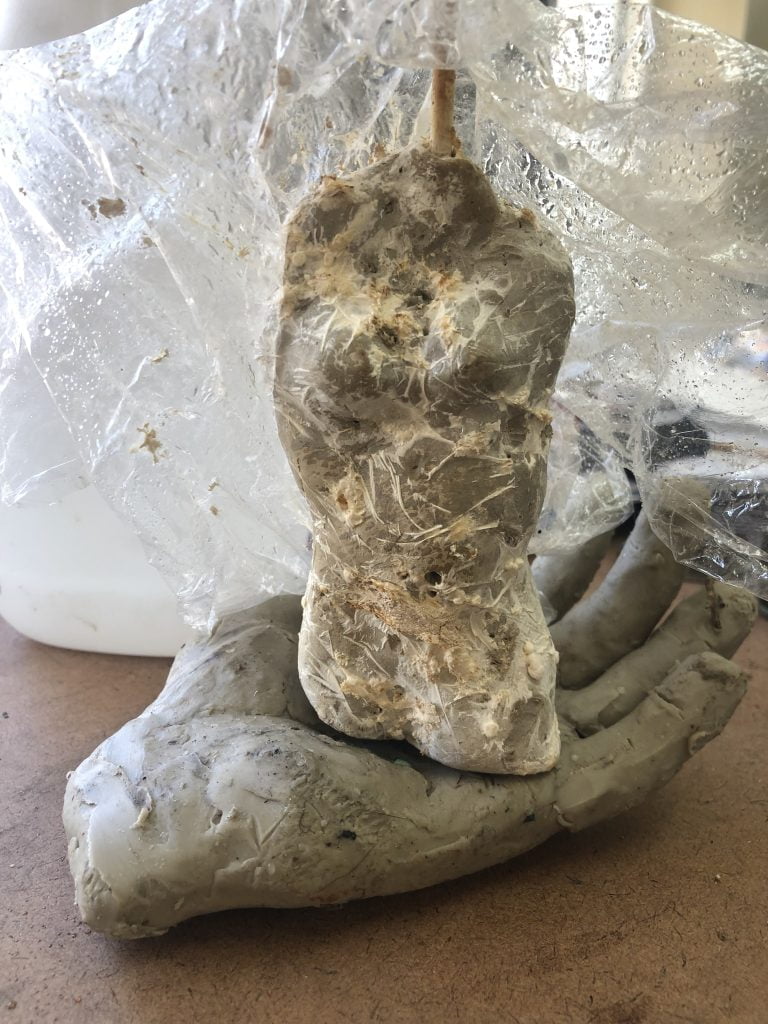
I have attempted in the last year to create 3d works from mushrooms and mycelium. My attempts have not been very successful; it is time-consuming and mostly do well in our cooler weather, winter time. In my research about growing mushrooms, I learned that different kinds of mushrooms have different characteristics in mycelium: like being vigorous and dense, while others are thin and very brittle. Different growth environments affect the growth of the mycelium. This experience leads me to conclude that growing mushrooms can be unpredictable, even random. I also have to consider that I am not raising my mushrooms in a very sterile environment, as I have not invested in the proper equipment. My work is very experimental.
2. Nests as material/objects of making
In a separate blog, I started to write conversations with another student and my thinking conversationally and will incorporate some of this learning in this part. (Blog called: The thing with vessels) I consider a nest like a container. The nest is a barrier, shielding the vulnerable life inside from harm. It embraces the eggs and young birds, cocooning them in a realm of warmth and security. The meticulous construction ensures stability, preventing the precious contents from rolling or falling out.
My making and writing explore ideas around a physical space for safety, a caring space, gathering of ideas, interweaving, connecting, and natural materials as materials to work with. I can also test my valuation and deepen my appreciation for the unique qualities of different materials by having this hands-on experience. This learning can be shared with viewers in my making and documenting of the process.
I can connect directly with nature by exploring natural materials or elements in my art. I can argue that nature became a collaborator in my creative process.
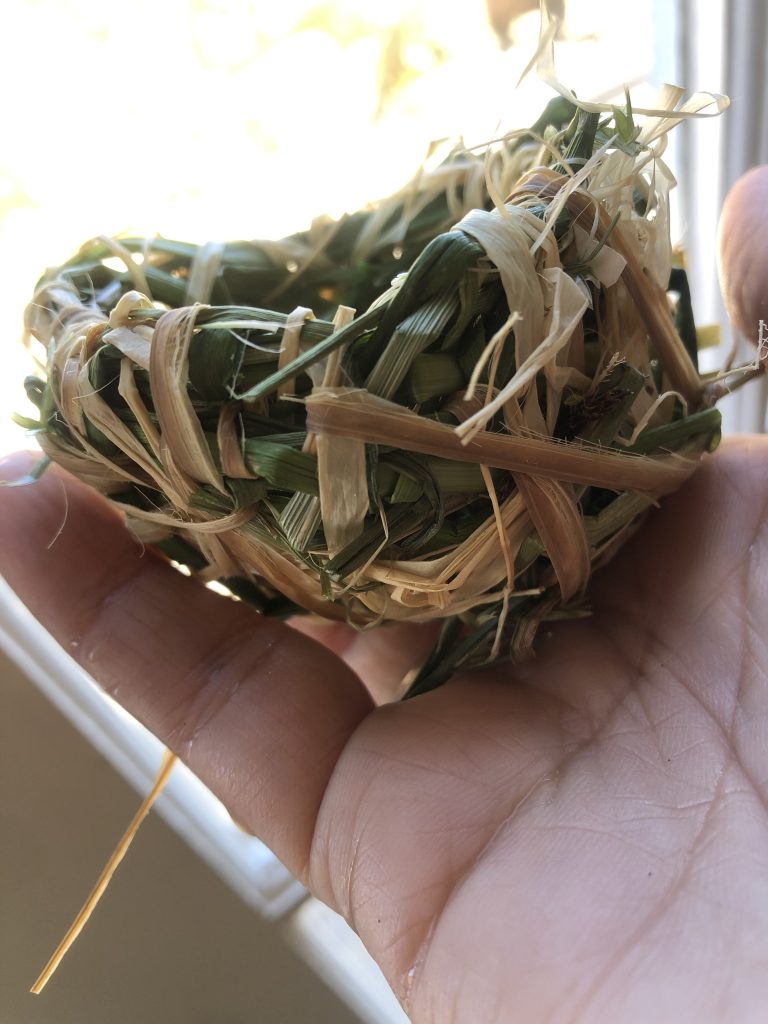
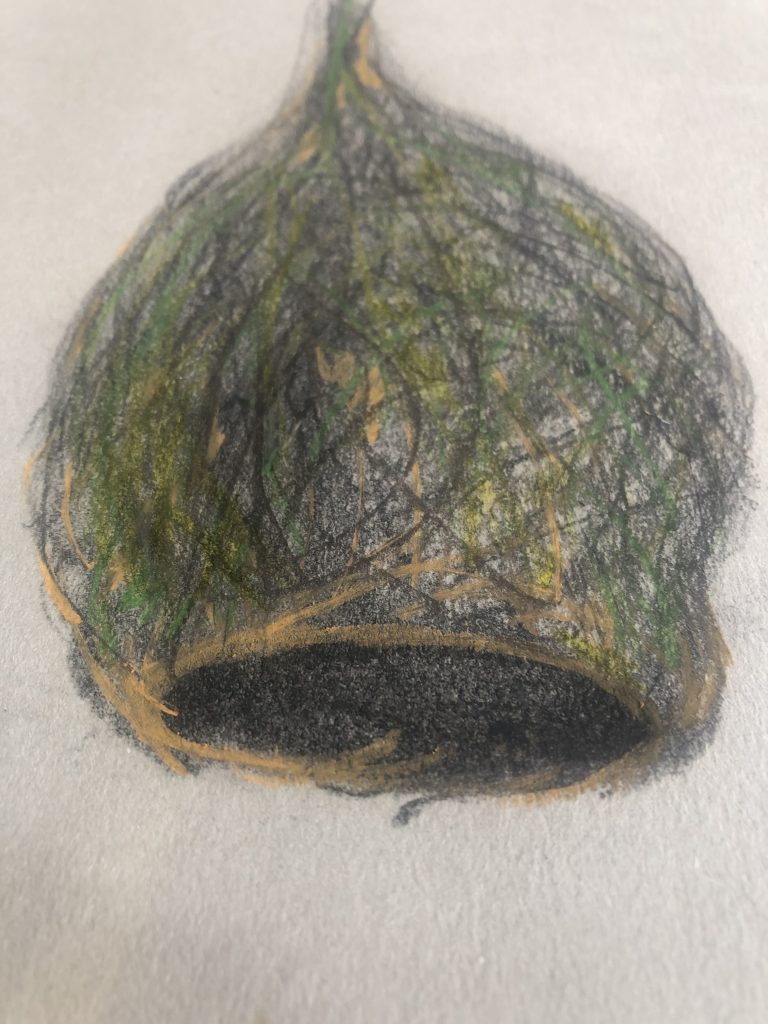
3. Daily drawing practice
I have learned that I enjoy working on projects requiring a time commitment. This becomes work I do daily, a process of drawing that I use as a sort of instruction as the first thing I do in my studio. I tend to focus on found objects I collect during my walks outside or to keep exploring drawing as a daily practice. I do not spend more than 10-15 minutes on this process.
My tutor suggested I look at Michel de Certeau’s The Practice of Everyday Life. I learned From de Certeau that I enjoy elevating life’s ordinary (or overlooked?) aspects by making them as meaningful as art. I place this on my social media (IG and Facebook) in the hope it creates a connection with the viewer on the beauty one can find in the everyday mundane things. Instead of following preconceived notions, I learned to allow my drawings to emerge as responses to the environment and my daily experiences. I explore different materials to draw with – combine other mediums or experiment more with materials. I see the potential to develop more work from it, which opens up new layers of meaning. I want to think that his ideas helped me to challenge the notion that the everyday is mundane. In my daily drawing practice, I created an opportunity to show that the overlooked and seemingly ordinary aspects of life can be extraordinary when viewed through the lens of artistic expression. On a deeper level, his ideas made me think about the ‘real world’ and freedom and how we struggle with control on so many levels. The fact that I committed to do the work, then photograph it onto my Iphone and then share it on IG. I need to consider how much control I have in the process after I made the work, as well as how these actions might ‘control’ me. This motivated me to keep this practice as an open space – a time in my practice where I focus on what I see and react to it spontaneously and find a form of freedom in this choice.
4. Contemporary artists
Xiaojing Yan, Ana Mendieta, and John Newling’s work have been inspirations and connections between research into my exploration and making with fungi, nesting materials and feathers. Using these artists can illustrate my findings and present evidence of testing my research questions. I also think that by looking at their work, I find ways to argue ideas around kinship within my body of work.
5. Key Topics
5.1 Care and Maintenance
I want to propose that my making consider care and maintenance. The ideas of M P de la Bellacasa can define the meaning of care when I argue or analyse my statements around care in my making. I can relate to work where I have started to see care as ‘thinking with the work to developing it as more a ‘being with’ and ‘doing with’ the materials and work. I collect materials in nature and imitate nature to grow and work with these materials. I can even see working with feather installations as a way of being sensitive to the other and showing care.
5.2 The Carrier Bag theory of fiction
To me, connecting with the land is a from of gathering. I would argue that I have ‘collected’ ideas and artists in the way I collect material – a form of finding connections around ideas around stories we tell about life and nature and our interactions with each other. Braiding Sweetgrass opened ideas around weaving and reweaving as a way to connect people with the land.
5.3 Ubuntu ties into these ideas as I focus on dealing with non-dualism and connectedness on a social level in my own community: so much ‘re-connection’ and respect between different groups within our community is needed, and artmaking as well as questions around being inter-dependent needs to be explored. Installation work within the community is something I would see happening from this research and explorations in my making.
I have to create a space where they continue to grow and explore possibilities to ‘regenerate growth’ (using spore and mushroom culture). Being with the material opens ideas of listening to or being sensitive to the materials. I document these processes in my writing and with photographs and making.
When I researched Xiaojing Yan, I became aware of her concerns with care and respect for working with mycelium. In my study material, I wrote the following, which I feel is still applicable to my research (blog for Part One, project One) “In a virtual studio visit, Yan described making the works akin to taking care of a baby: every morning, she gets up and checks on her sculptures. They are, after all, alive. Eventually, the mycelium starts fruiting burgundy brackets. Yan carefully controls the temperature and humidity, which affect the shape of the growing bodies. But still, only about half of the sculptures fruit.
I conclude that Yan intends to cede some control to her fungal collaborators, though ultimately, she decides whether to compost the material or exhibit it. She describes herself as organized and methodical, and admits that it can be tricky to determine when to intervene and let nature run its course. A great question comes to mind: When does the artist stop interfering?
Whilst making vessels and nests I started asking myself, what if I look at the Earth as a container of life and ecosystems? The planet holds and sustains many organisms, supporting diverse habitats and intricate interconnections. Can I explore the idea of being a vessel for life, nurturing and protecting the delicate balance of nature in my art-making? I also want to move around ideas about interconnectedness: How does the earth act as a vessel for interconnected human societies?
IDENTIFY HEADINGS and NARROW DONE TO THREE HEADINGS
- Contextual information that will clarify and identify meanings and information I find essential to argue ideas and my position around human and non-human interconnectedness.
- Artists who inspire my ideas around ‘making with’ as a central approach
- Key Topics, methodologies and Theories that help me build an argument about non-human agency and interconnectivity in my materials and making
- Which theorists/thinkers/writers influence my thinking around making with the non-human?
EXERCISE 1.2. Exploring and uncovering
I could get access to the Study Skills Handbook as recommended in the Study material (pdf on SCRIBD). I found it valuable to read Chapter7 and consider the Checklist for Critical analytical thinking shared in the book. ( Chapter 7, p 196-202)
State the main features of the argument.
In my making, my practice was moving towards my thoughts around interconnectedness and how materials have agency. I have experienced loss and needed to reconnect to nature to deal with deep emotions around loss, death and disconnectedness. Feelings of vulnerability opened up how inter-connectedness is a space to explore in my making.
I chose materials which are found in nature to have these explorations. Making art with found objects connected me to the complexities of everyday life and my need to respect nature and find ways to search for my expression within this space.
Ideas around Ubuntu further inspire me to form solidarity with plants and nature as a space to re-imagine a more just and equal future. From fungi, I have learned about inter-dependency and the necessity of decomposers. Reading Tshing opened ideas of how humans can continue to care for nature in a capitalist society by caring for and thinking about soil and plant conditions – spreading awareness around finding ways to oppose exploitation and disrespect, by showing appreciation of their beauty and connectedness.
Making and documenting the process
I hope fungi will grow on the object and interact with the original shape of the object (hand) I placed it on.
This work started after a repetitive daily drawing commitment: I drew my hand, and in one of the explorations of drawing, I made an imprint of my hand and then placed a mushroom to leave a spore print on it. I made a hand modelled in sculpture clay, placed this image onto the sculpture, and placed it in a dark place for the mycelium to grow. I had to create a humid place for this growth, sprayed the work twice daily with water, and kept the temperature at around 24C. This was not easy as it was getting colder, and my studio did not have heating. This was, unfortunately, also the time I broke my leg and ankle and was hospitalized for four days. I later moved the box to the kitchen, where the Aga stove was always burning. By 9 July 2023, I noticed the mushroom spore nicely imprinted onto the hand. We have taken a short holiday, and I could not attend to this work for more than ten days. It stayed in the box, but temperatures were fluctuating, and most probably, conditions were not optimal for growth.
Below is a hand I made of clay and then added mushroom spore and kept it in a dark place for the mycelium to grow. I have not been very successful with this project but have not yet given up on growth possibilities.
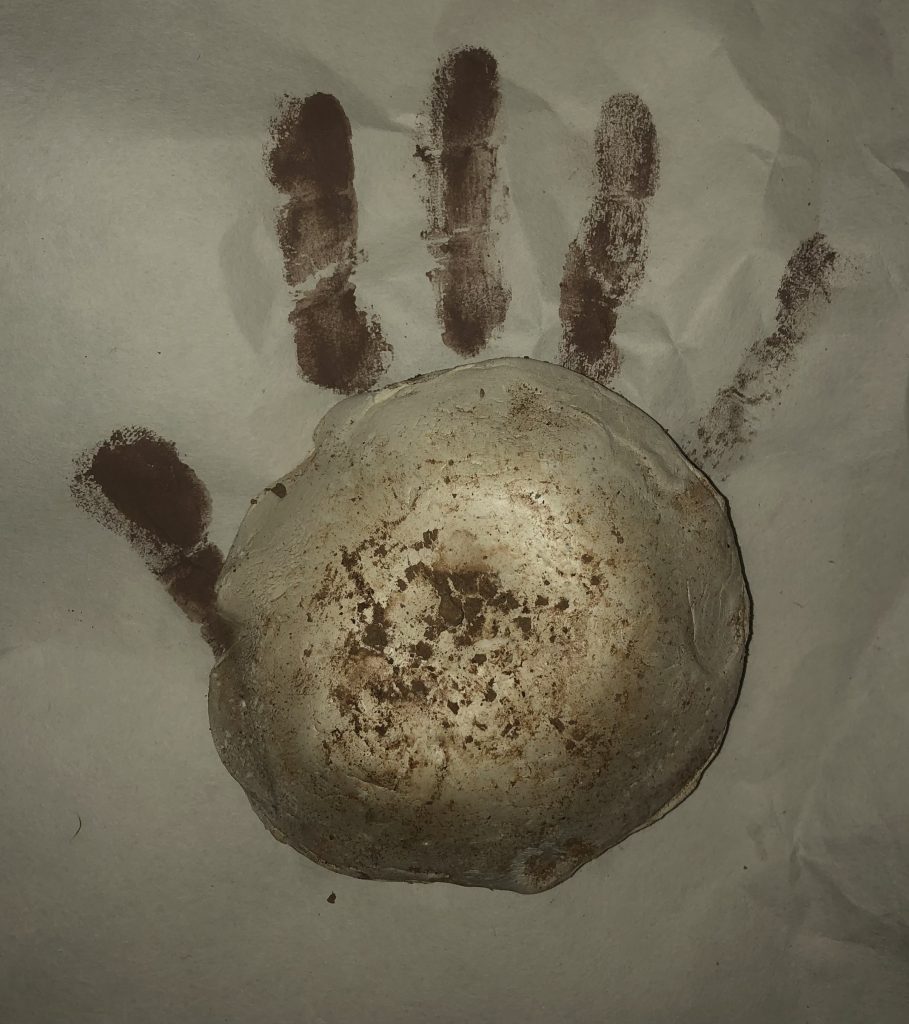
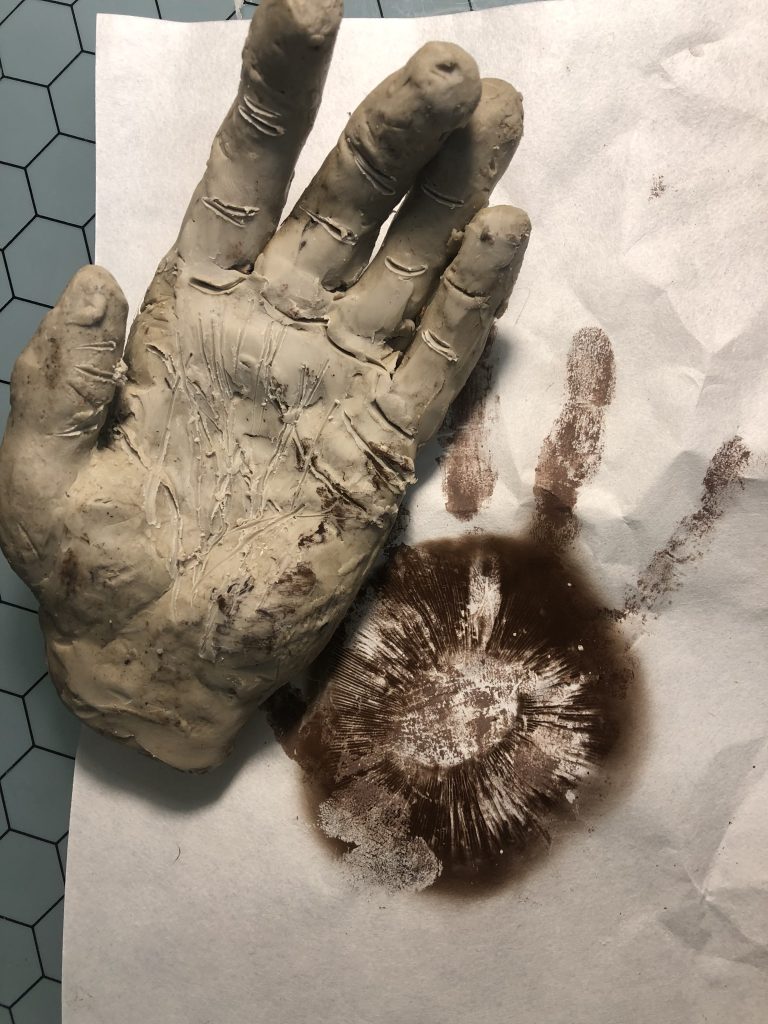
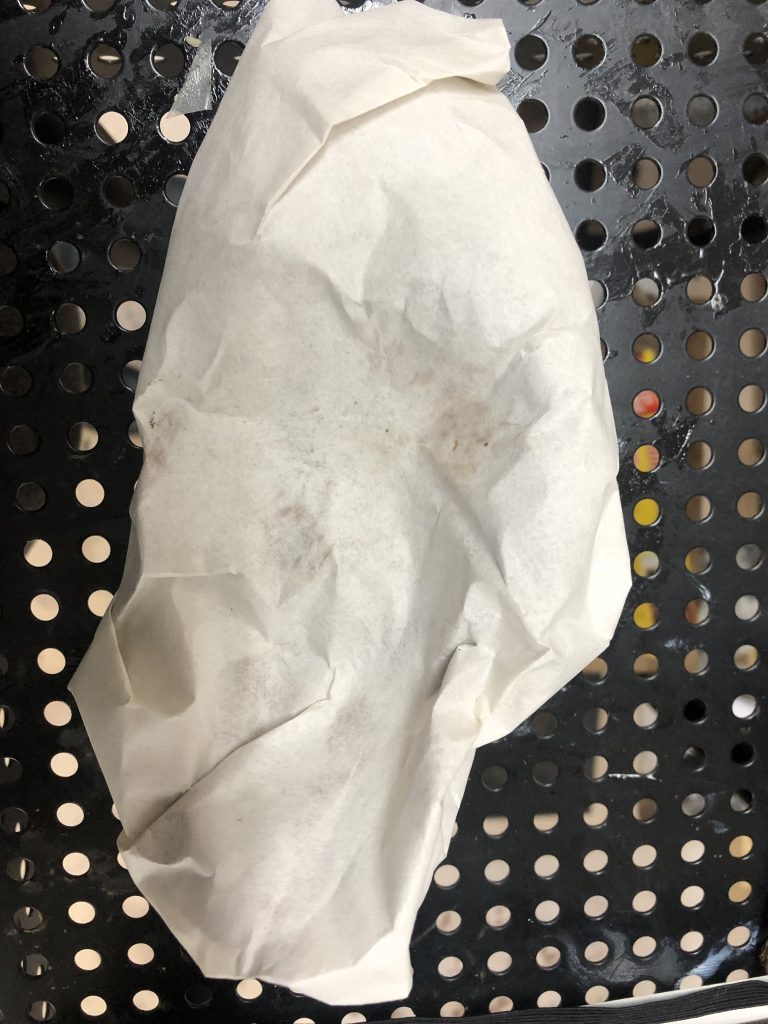
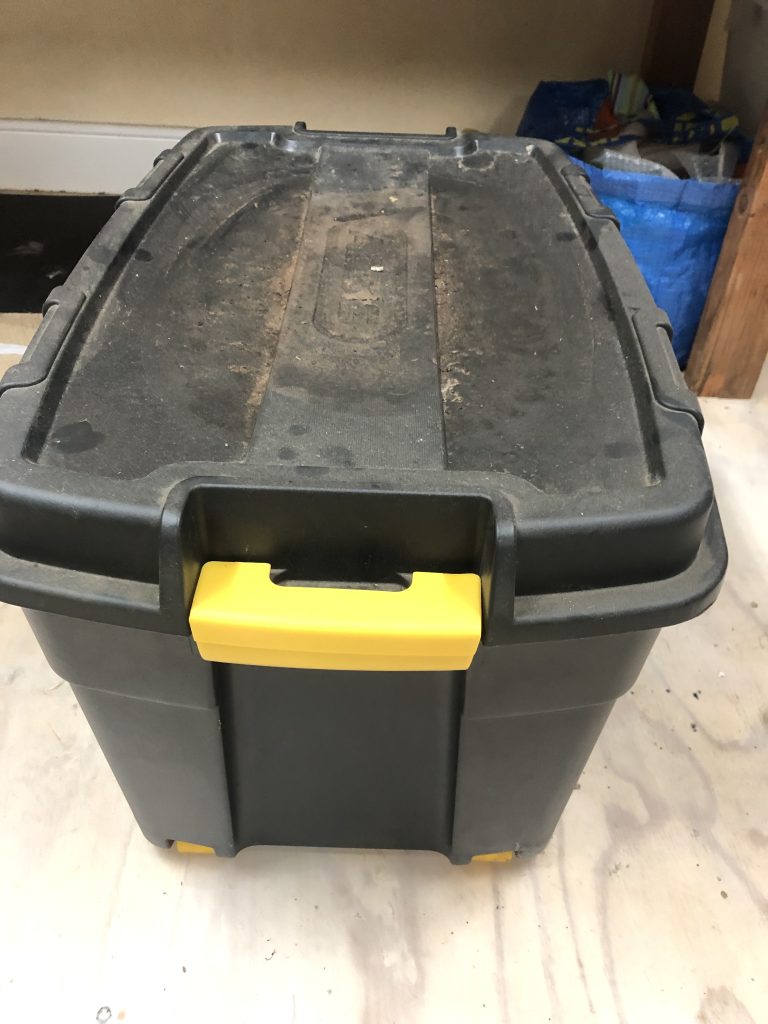
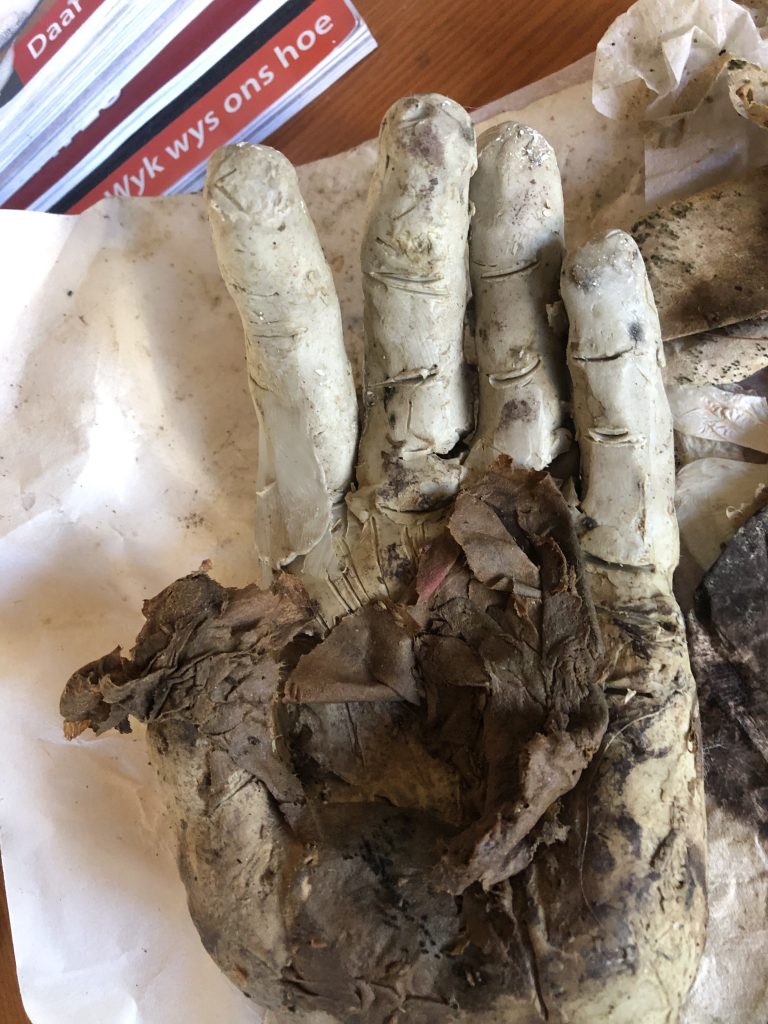
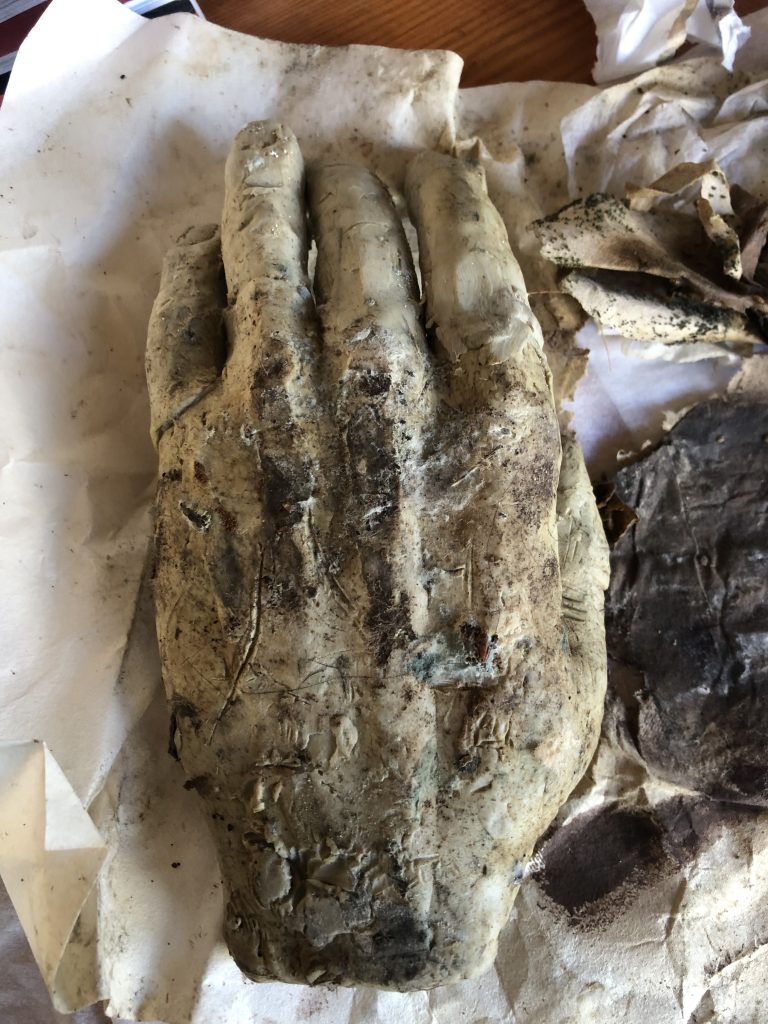
I noted on 18th July some mycelium on the hand, and on 25 July 2023, mycelium started showing on the sculpture’s thumb on the inside. The image below shows the white mycelium on the thumb ( image) and possibly other areas where spores would start to grow into the sculpture ( ). I can observe and care by doing the daily tasks of spraying water – the fungi have now become the maker. I spray water onto the work twice a day. I decided to add more paper on 26 July 2023. Part of my care is to ensure my hands are sanitized before I touch the object – to ensure no contamination happens. By adding more paper to the work, I provide the mycelium with food, and the spraying of water mist creates a humid environment in the box, which is needed for the mushrooms to grow and pin.
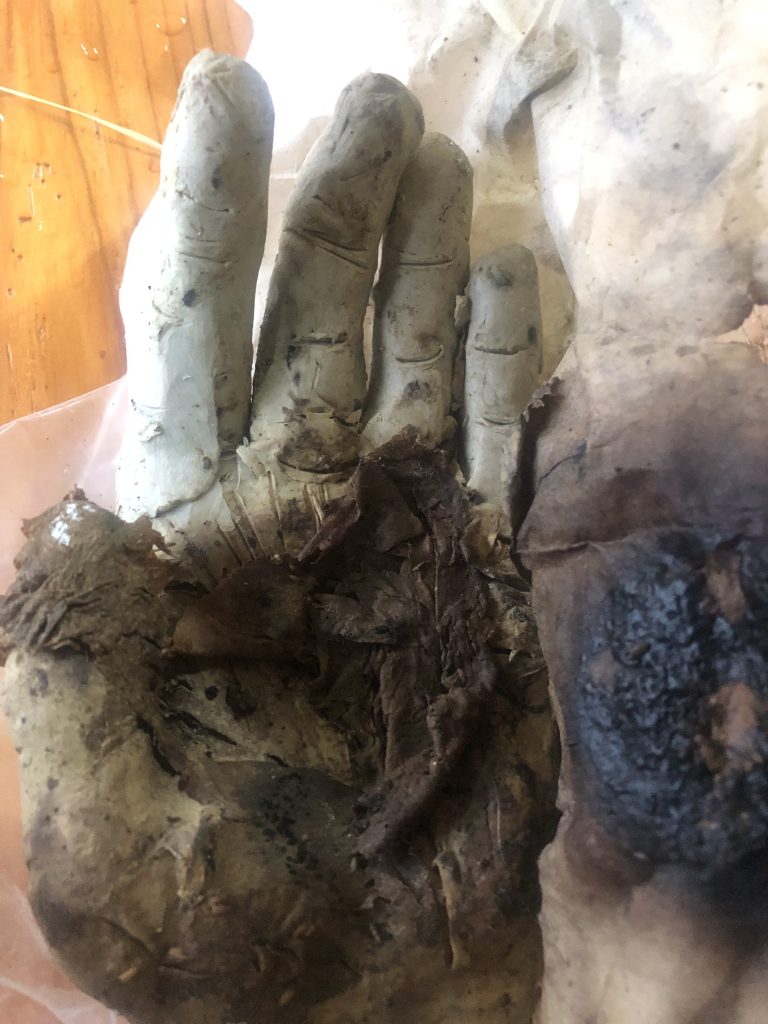
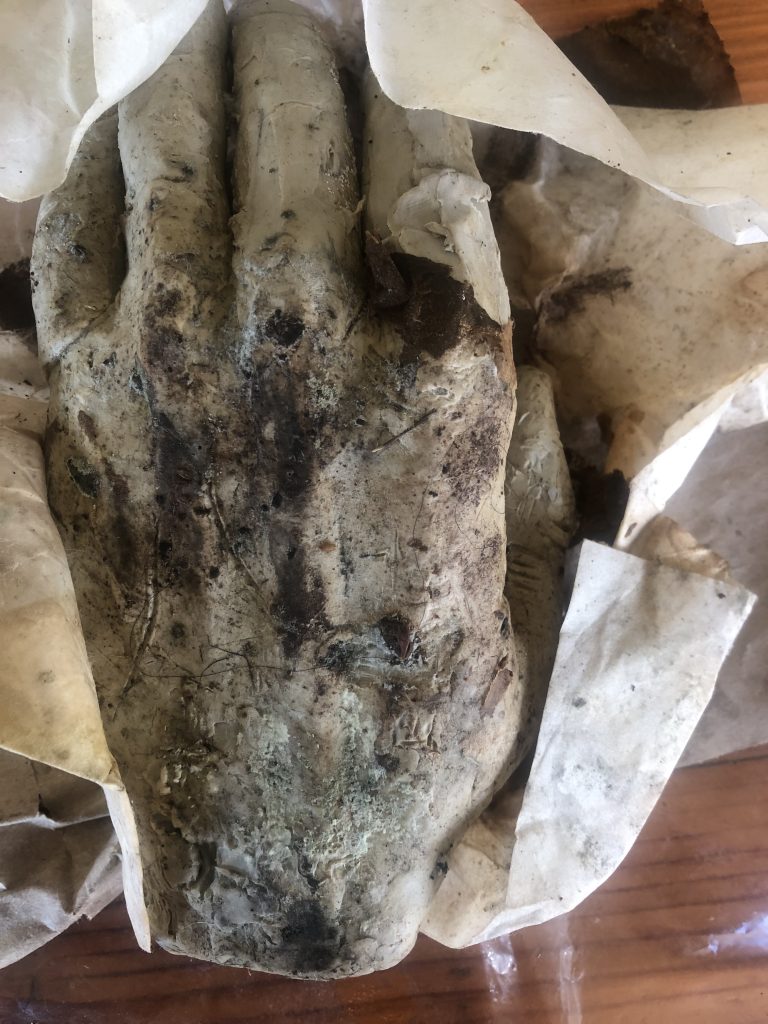
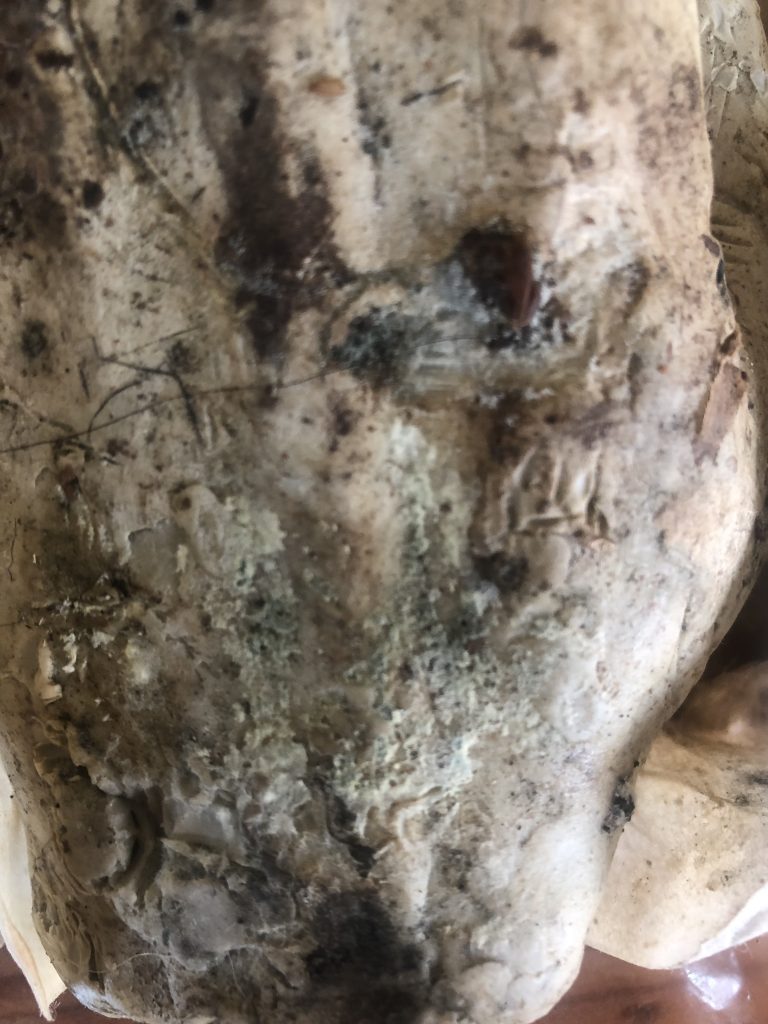
Working on the idea of a para-site
I am part of a group of students with whom I communicate via WhatsApp. We share our work and comment on each other’s processes or explorations within this group. This supportive environment also leads to a small crit group opportunity. I could ask them to test my ideas of making with the non-human.
I will continue to share a crit session with this group scheduled for early August 2023, on this page.
Reflecting on this making as part of my research
With this work, I consider ideas around care and maintenance and adapting to a working/learning which is processed-based, as well as with the non-human. I feel this work can have a relationship with more theory-based works, such as the work of the conceptual artist Mary Kelly, in her Post-Partum Document (1973-79), as I can add text in terms of maintenance and care as well as the work as the artefact of this experience. Thinking about the artist, Ukeles and her statement that her work will be her work, I believe there is a connection with this process and, therefore, will continue to see this work as a ‘para site’ within my body of work for this course. I realise this work is about the maintenance and care needed to create and work with these fungi., by keeping them alive and creating optimal conditions for growth. In a way, the fungi are now becoming the actor and makers of the work. The work enable me to respond and experiment with a lively matter and learn more about these entanglements with living matter, that is not considered human. I recognise this is not a science project and is mostly about the process of making and finding meaning in art.
I also believe that by keeping the outside site (deconstructing of work with Annette Holtkamp, 2022) ongoing, I will learn more about working with mushrooms as material. I am more aware of external factors such as passing of time, temperature and weather. I have to protect the site from winds and too much sun over different times of the season. I am also learning to grow mushrooms outside in nature and consider their use as composters within the healthy cycle of soil and growth of plants.
Bibliography
Dunnigan, J. (2013) ‘Thingking‘ In: Sommerson, R. and Hermano, M. L. (eds.) The art of critical making – Rhode Island School of Design on creative practise. (s.l.): Wiley. pp.94–115.
Myers, Natasha.
Marcus, George, E . May. 2021. The Para-Site in Ethnographic Research Projects . Chapter 3 as pdf accessed online on 23 July 2023 at https://read.dukeupress.edu/books/book/2902/chapter/2860826/The-Para-Site-in-Ethnographic-Research-Projects
Vincs, Kim (2007). Rhizome/myzone : a case study in studio-based dance research. Deakin University. Chapter. https://hdl.handle.net/10536/DRO/DU:30007009